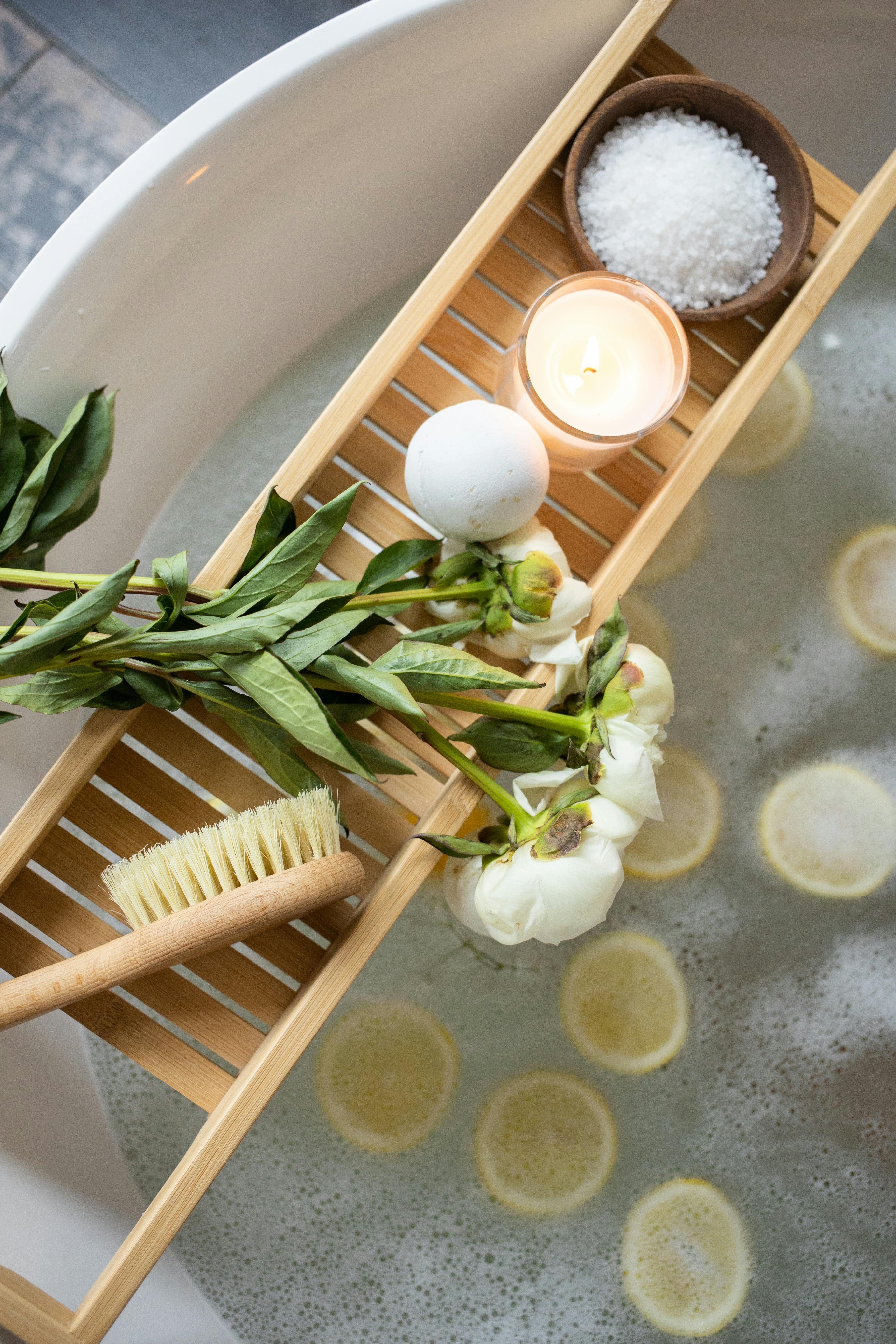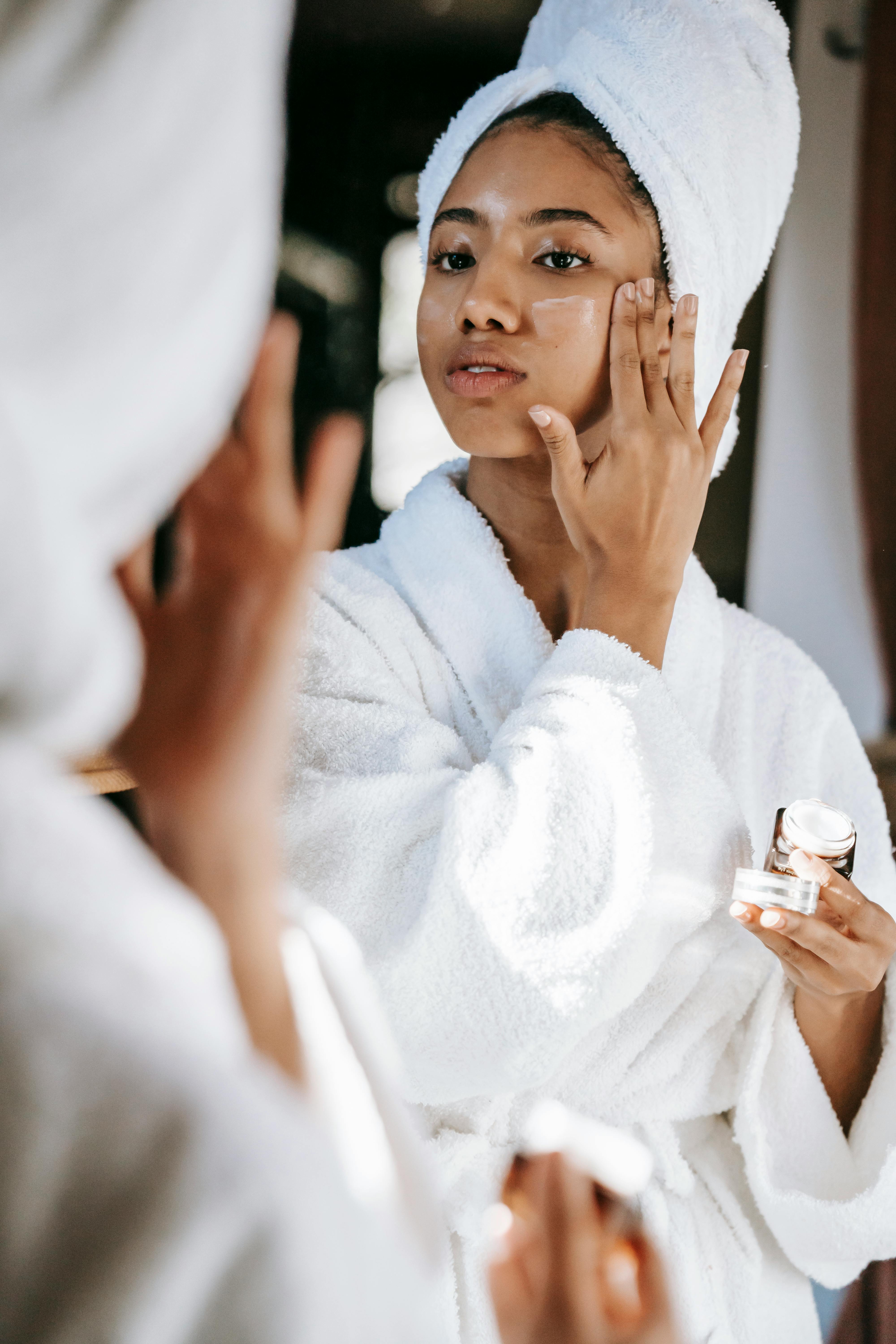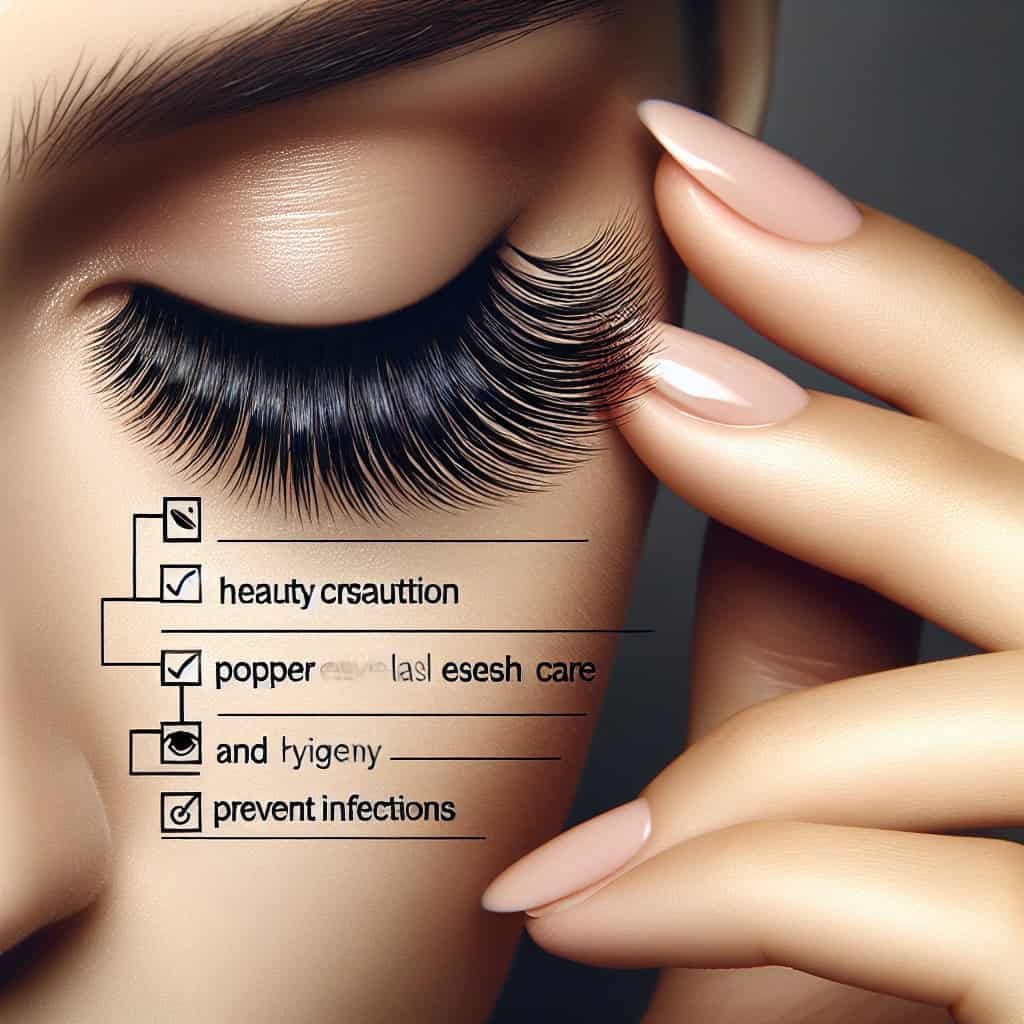In the world of beauty and cosmetics, it’s essential to prioritize both aesthetics and safety when it comes to eyelash extensions. Imagine fluttering long, lush lashes that not only enhance your beauty but also keep your eyes healthy and infection-free. Professionals in this industry are masters at educating their valued clients on the importance of proper lash care and hygiene. From providing simple demonstrations to recommending appropriate products, they ensure that you not only look fabulous but also maintain the utmost level of cleanliness and avoid any potential infections. Let’s explore the various ways these experts work their magic in educating clients about the art of lash maintenance.

1. The Importance of Proper Lash Care
Taking care of your lashes is essential for maintaining their health and preventing infections. Your lashes play an important role in protecting your eyes from dust, debris, and other foreign substances. Proper lash care not only ensures the longevity of your extensions but also safeguards your eye health.
1.1 Maintaining Eyelash Health
To maintain the health of your natural lashes, it is important to follow certain guidelines. Avoid rubbing or pulling on your lashes, as this can lead to lash breakage and weaken the hair follicles. Instead, gently brush your lashes using a clean spoolie brush to keep them looking neat and prevent any tangling.
Additionally, be cautious when using makeup products around your lashes. Avoid oil-based makeup removers and mascara, as these can weaken lash extensions and cause premature shedding. Opt for water-based or oil-free products that are specifically designed for lash extensions.
1.2 Preventing Infections
Proper lash care also involves preventing infections. One common cause of infections is poor hygiene practices. It is crucial to keep your lash extensions clean and free from bacteria. Avoid touching your lashes with dirty hands and refrain from excessive touching or rubbing of the eyes, as this can introduce harmful bacteria.
Regularly cleaning your lash extensions with a gentle, oil-free cleanser can help remove any buildup or debris that may accumulate. Use a clean microfiber brush or lint-free cloth to carefully wipe away any residue. It is important to follow the recommended cleaning routine provided by your lash professional to avoid damaging the extensions.
2. Educating Clients on Lash Maintenance
As a client, it is important to be well-informed about lash maintenance to ensure the longevity and health of your lashes. Proper education from lash professionals can equip you with the necessary knowledge and skills to take care of your lashes effectively.
2.1 Pre-Application Recommendations
Before getting lash extensions, your lash professional may provide you with pre-application recommendations. These can include avoiding the use of oil-based products on your lashes, thoroughly cleansing your lashes before the appointment, and avoiding excessive exposure to water or steam prior to the application. Following these recommendations helps in ensuring a successful and long-lasting lash extension application.
2.2 Daily Care Routine
Establishing a daily care routine is crucial for maintaining the health of your lash extensions. Your lash professional may guide you on the appropriate products to use, including lash cleansers and brushes, and demonstrate the proper technique for cleaning your lashes. Implementing this routine into your daily habits can help keep your lashes clean, free from debris, and prolong their lifespan.
Additionally, your lash professional may advise you on proper mascara usage, if desired, and provide recommendations for mascara brands that are compatible with lash extensions. They will likely emphasize the importance of using a water-based mascara and caution against waterproof mascaras that require oil-based removers.
2.3 Post-Application Care
After getting lash extensions, your lash professional will provide you with specific instructions for post-application care. This may include avoiding touching or rubbing your eyes for a certain period of time, avoiding excessive exposure to heat or steam, and refraining from using oil-based skincare products around the eye area. Following these instructions diligently will help promote the retention and overall health of your lash extensions.
3. Ensuring Hygiene Practices
Maintaining proper hygiene practices while handling lash supplies and performing lash services is crucial for both the lash professional and the client. By implementing strict sterilization and sanitization protocols, lash professionals can minimize the risk of infections and create a safe environment for their clients.
3.1 Sterilization and Sanitization
Lash professionals must ensure that all reusable tools and supplies are properly sterilized and sanitized before each use. Tools such as tweezers, scissors, and adhesive palettes should undergo thorough sterilization using medical-grade disinfectants or autoclaves. Disposable items, such as lash brushes and eye pads, should be used for each client to prevent cross-contamination.
Additionally, lash professionals should regularly clean and disinfect their workstations, including lash beds, pillows, and any other surfaces that come into contact with clients. By maintaining high standards of sterilization and sanitization, lash professionals can provide a hygienic environment for their clients’ lash procedures.
3.2 Hand Hygiene
Proper hand hygiene is essential for lash professionals to prevent the spread of bacteria and viruses. Lash professionals should thoroughly wash their hands with soap and water for at least 20 seconds before and after each client. Additionally, they should use alcohol-based hand sanitizers throughout the lash service to maintain cleanliness and minimize the risk of infections.
3.3 Proper Storage of Lash Supplies
Lash professionals must store their lash supplies correctly to prevent contamination and maintain their quality. Adhesive should be stored in a cool, dry place, away from direct sunlight and heat sources, to ensure its effectiveness. Lash extension trays should be properly sealed and stored in a clean, dust-free environment to prevent the growth of bacteria or mold.
Properly storing and handling lash supplies not only extends their shelf life but also prevents the risk of infections associated with contaminated products.
4. Common Lash Infections and How to Avoid Them
Despite proper lash care and hygiene practices, there is still a possibility of developing lash infections. Understanding the common types of lash infections can help you recognize the symptoms and take appropriate measures to prevent them.
4.1 Allergic Reactions
Allergic reactions to lash extensions are relatively rare but can occur in some individuals. Symptoms may include itching, redness, and swelling of the eyelids or the area around the lashes. To avoid allergic reactions, it is important to choose a reputable lash professional who uses high-quality lash products and to inform them of any known allergies or sensitivities before the application.
4.2 Blepharitis
Blepharitis is an inflammation of the eyelids that can be caused by bacterial or fungal infections. It can result in redness, itching, and flaking of the eyelid margins. To prevent blepharitis, it is important to maintain good eyelid hygiene by regularly cleaning the lash line and avoiding the use of oily cosmetics or skincare products that can contribute to the buildup of bacteria.
4.3 Conjunctivitis
Conjunctivitis, also known as pink eye, is a common eye infection that can be caused by bacterial, viral, or allergic factors. It can cause redness, itchiness, and discharge from the eyes. Proper lash hygiene, including regular cleaning and avoiding touching or rubbing the eyes, can help prevent the spread of conjunctivitis.
4.4 Styes and Chalazia
Styes and chalazia are eyelid infections that result in the formation of a painful lump or bump. Styes are usually caused by bacterial infections, while chalazia are typically caused by blocked oil glands. To minimize the risk of developing styes or chalazia, it is important to maintain good overall eye hygiene and avoid rubbing or touching the eyes excessively.

5. Communication and Education Techniques
Effective communication and education techniques are essential for lash professionals to properly educate their clients and ensure they understand the importance of proper lash care and hygiene.
5.1 Clear Communication
Lash professionals should communicate in a clear and concise manner, using language that the client can understand. They should explain the steps involved in lash maintenance and hygiene, providing detailed instructions and addressing any questions or concerns the client may have. By establishing clear communication, lash professionals can empower their clients to take proactive steps in caring for their lashes.
5.2 Visual Demonstrations
In addition to verbal instructions, visual demonstrations can be an effective educational tool. Lash professionals can demonstrate proper lash cleansing techniques, the correct way to brush lash extensions, and other maintenance tips. Visual demonstrations help clients visualize the correct techniques and enable them to replicate these steps at home.
5.3 Written Instructions
Providing written instructions can serve as a reference guide for clients to follow at home. Lash professionals can provide detailed written instructions on lash care routines, including recommended products and cleaning techniques. These written instructions act as a reminder for clients and help reinforce the education they receive during their lash appointments.
6. Addressing Client Concerns and Questions
Clients may have concerns or questions regarding lash care and hygiene. Lash professionals should be prepared to address these concerns and provide accurate information.
6.1 Providing Accurate Information
It is important for lash professionals to stay updated on industry standards and research to provide accurate information to their clients. They should have a good understanding of the ingredients in lash products and be able to explain the purpose and benefits of each product. By providing accurate information, lash professionals can alleviate any concerns or doubts the client may have.
6.2 Dealing with Allergic Reactions
In the case of allergic reactions, lash professionals should advise clients to seek medical advice immediately. They should provide information on the common symptoms of allergic reactions and instruct clients to remove the lash extensions if they experience any discomfort. It is important for lash professionals to support their clients through the process and offer assistance in finding alternative lash options that are more suitable for their needs.
6.3 Managing Eye Irritation
If a client experiences eye irritation or discomfort, lash professionals should address the issue promptly. They should provide recommendations for soothing irritated eyes, such as using artificial tears or applying a cool compress. Lash professionals should also assess the client’s lash application and make any necessary adjustments to minimize irritation.

7. Monitoring and Follow-Up
Regular monitoring and follow-up appointments are crucial for both the lash professional and the client to ensure the ongoing health and satisfaction of the lash extensions.
7.1 Regular Check-Ups
Lash professionals should schedule regular check-up appointments with their clients to assess the condition of the lash extensions and address any concerns. These check-ups allow the lash professional to monitor the client’s lash health and provide any necessary maintenance or adjustments.
7.2 Tracking Client Reactions
Lash professionals should keep records of their clients’ reactions and feedback to different lash products and techniques. This information helps them identify any trends or patterns that may indicate potential allergic reactions or sensitivities. By tracking client reactions, lash professionals can adjust their techniques or recommend alternative lash options to minimize the risk of adverse reactions.
7.3 Adjusting Care Instructions
Based on the client’s feedback and the condition of their lash extensions, lash professionals may need to adjust the care instructions provided. Every client is unique, and lash professionals should be flexible in tailoring their care instructions to suit individual needs. By monitoring the client’s lash health and adjusting care instructions accordingly, lash professionals can ensure optimal results and client satisfaction.
8. Collaboration with Medical Professionals
In certain situations, it may be necessary for lash professionals to collaborate with medical professionals to address specific concerns or issues related to lash care and hygiene.
8.1 Recognizing Symptoms
Lash professionals should be able to recognize the symptoms of potential infections or other eye-related issues. If they notice any abnormal symptoms, such as excessive redness, swelling, or pain, they should promptly refer their clients to medical professionals for further evaluation.
8.2 Referring to Specialists
In cases where clients present with severe allergic reactions or persistent eye issues, lash professionals should refer them to ophthalmologists or dermatologists who specialize in eye care. Medical professionals can provide a thorough assessment and recommend appropriate treatment options to address any underlying concerns.

9. Continuous Education for Professionals
To ensure optimal client care and safety, lash professionals should continuously educate themselves and stay up-to-date with industry standards and best practices.
9.1 Staying Up-to-Date with Industry Standards
The beauty industry is constantly evolving, and lash professionals should stay informed about the latest trends, techniques, and products. They should attend industry conferences, workshops, and seminars to expand their knowledge and stay up-to-date with the current best practices in lash care and hygiene.
9.2 Ongoing Professional Development
Lash professionals should prioritize their ongoing professional development by seeking additional certifications and advanced training courses. These opportunities provide valuable insights and enable lash professionals to offer the highest quality of care and expertise to their clients. By investing in their own education, lash professionals can instill confidence in their clients and ensure that they receive the best possible service.
10. Conclusion
Proper lash care and hygiene are vital for maintaining the health and longevity of your lash extensions. By following the recommended guidelines provided by lash professionals, you can ensure the health of your natural lashes and prevent infections. Educating yourself on lash maintenance, adhering to hygiene practices, and staying informed about potential risks and complications will contribute to the overall success of your lash experience. Remember, taking care of your lashes is not only about achieving beautiful results, but it is also about prioritizing your eye health and well-being.

